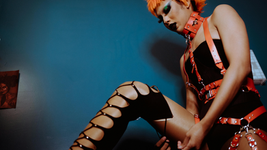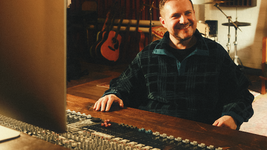DIVA at the V&A: An Experience of Worshipping the Feminine
- Charley Dennis
- Oct 11, 2023
- 4 min read
The V&A’s DIVA exhibition is an enlightened exploration of the journey this term has taken throughout the last two hundred years, from the ‘divine heroines’ of opera to our pop culture icons. Until next April, you can see their grand display of artefacts from modern history’s most entertaining and subversive women while learning about the complicated story of the term ‘diva’.
"Photo by hat-archive (licensed under CC BY-NC-ND 2.0)"

This exposition on women’s history was masterfully structured into two acts – both the construction of the ‘diva’ and its later reclamation. Both halves built of six provoking scenes retell, what I’d summarise as, the lived story of female autonomy on the stage. Its focus on the real-life women who lived this narrative helps to both resituate the real heroines, without the bulk and complexity of grand narratives. Marie Lloyd is one of the first women explored through this exhibition – a music-hall singer of humble backgrounds who swept the performance scene of late-ninetieth-century London. Her act both conformed to the dominant expectations of Victorian women, while cheekily subverting the restrictions she lived under through risqué winks and innuendo.
The fact that this exposition of ‘diva’ managed to account for the dialectics of female emancipation, even in its earliest forms, demonstrates both the level of research and engagement with feminist thought. The impressive ways in which these women toyed with patriarchal systems are threaded throughout the exhibition and provide a more refreshing angle on the history of sexuality, but importantly, they don’t detract from the talent of these individuals regardless of their relationship to male systems of power.
This is clearly employed with the use of music throughout the exhibition; every visitor is encouraged to wear their interactive headsets, which offer an extra dimension as relevant music is played as you progress through the exhibition. Upon entering the first room, your ears are filled with the magnificent sounds of the early opera ‘divas’ which invokes a feeling of entering the past as you walk into this darkened chamber filled with outfits and memorabilia of the eighteenth-century stars. The music is a testament to the talent of these people, but also complimented the narrative in a secondary way.
If you spend long enough in each section, the song will come to its finale, and the room will become eerily silent again. This allowed me to reflect on these women beyond their glitz, glam, and undeniable talent; a depressing tone sets in as you read about the constant devaluing and silencing of these performers. This was evident on more tame levels where women were forced to play roles representing female archetypes, constructed for the male gaze, of course, such as Theda Bara’s Cleopatra or Clara Bow as the ‘It Girl’. This is taken to its extremes when you come across the placard of Bette Davis’ quote: “When a man gives his opinion, he’s a man. When a woman gives her opinion, she’s a bitch,” which demonstrates the running theme of the historical disregard of female voices, and how the ‘divas’ represent the battle to transcend this.
As you finish the first floor with a duality of admiration and reflection for the women explored in this cavernous room, you climb the stairs into a brand-new world. You’re immediately confronted with Rihanna’s iconic 2018 ‘Heavenly Bodies’ Met Gala Look – a beautifully jewel-encrusted robe and papal mitre – while a selection of her best anthems plays through your headphones. You immediately understand that you’ve entered the golden age of female art as you peer around the room at a dazzling display of archives from the most recognizable names in Hollywood and beyond.
A new theme which ran through Act Two was the growing prevalence of queerness in pop culture and the popularity of the reclaimed ‘diva’; Lady Gaga played a prominent role here, with the inclusion of her recognisable 2019 blue Golden Globes outfit she wore as she accepted the award for Best Original Song. Her placard appropriately describes her as a ‘polymath singer, songwriter, multi-instrumentalist, actor and activist’ which speaks to the boundaries in which ‘divas’ have come to cross. The term began as a description of the stars of opera but has evolved to describe modern women who demonstrate their ability to do seemingly everything they dream of.
Lady Gaga is among many of the ‘divas’ portrayed who have pushed the boundaries of heteronormativity, and this was taken to more provoking levels through the inclusion of drag queens and male ‘divas’. It would’ve been heresy not to include legends such as Elton John or Prince, however, the prominence of RuPaul was an intriguing conclusion to this exhibition. The self-proclaimed Queen of Drag has come to dominate LGBTQ culture, and it cannot be denied, is undoubtedly a ‘diva’. His presence at the V&A’s DIVA exhibition perhaps alludes to a future where gender is more porous, and the performance of femininity reaches new heights.
You descend the same bifurcated staircase you ascended on and into the same darkened ground floor to be reminded of the complex history of the term ‘diva’. The exhibition has greatly deepened your understanding of the lives of female performers, and with an excitement for their next manifestation you read the final board: ‘The true measure of a diva lies in their legacy and influence’.
Edited by Faye Elder, London and Beyond Editor






































留言